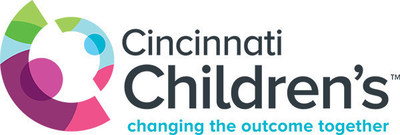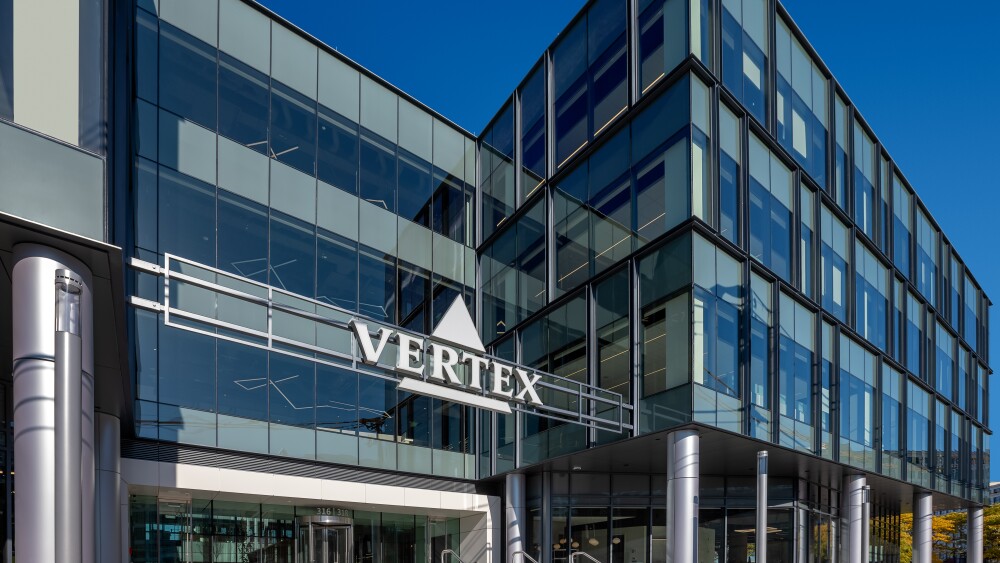Clinical Trial Success at Cincinnati Children's Supports Recent US FDA Approval for First Therapy to Directly Replace a Gene in the Brain
CINCINNATI, Nov. 15, 2024 /PRNewswire/ -- Sriansh Ojha was fully into his "terrible twos" on an April afternoon at Cincinnati Children's as he squealed and chased his older sister around the sunlit lobby of the Schubert Research Clinic.
Urging the laughing little boy to slow down was a parenting task that his mother, Bhawana Dhakal, and father, Tirtha Raj Ojha, of Lexington, Ky., felt profoundly pleased to perform. That's because in the first year of life, their son struggled to eat, could not lift his head off the bed, could not control his eye movements, and was not expected to ever be able to walk, much less run.
"Gene therapy is a blessing I must say. You can see my child, before and after, and see that it works. He's a new person. He has a new life," Bhawana says.
Sriansh was born with a rare genetic condition called AADC deficiency. In November 2022, at age 16 months, Sriansh became the youngest child in the world to receive a remarkably successful one-time gene therapy made by New Jersey-based PTC Therapeutics Inc. The treatment is now being marketed under the brand name KEBILIDI™.
Sriansh, now 3 years old, was part of a clinical trial that led the U.S. Food and Drug Administration to approve the treatment on Nov. 13, 2024. The new treatment represents the first gene therapy approved in the United States that is directly administered to the brain. (Read the PTC media release)
The therapy was developed about 15 years ago in Taiwan. Since 2010, when the first patient was treated, the therapy has been approved for commercial use by the European Union, the United Kingdom, and Israel. So far, only about 30 children worldwide have received the treatment.
Donald Gilbert, MD, MS, a movement disorder expert with the Division of Neurology at Cincinnati Children's, played a central role in treating Sriansh and enrolling him the clinical trial.
He saw, in full clinical detail, exactly how severe Sriansh's condition was before the therapy. Then he saw Sriansh for a follow-up visit three months after a high-tech surgical procedure delivered the gene therapy to his brain.
"When I walked in and saw him, sitting up, completely on his own…" Gilbert pauses for a moment. "I will never forget that."
"The way that a missing gene can be put in the brain in the place where it's needed, in a single-day treatment, and then produce what is needed for the rest of a child's life is amazing," he says.
What is AADC deficiency?
Aromatic l-amino acid decarboxylase (AADC) deficiency is a very rare inherited genetic disorder that disrupts how signals pass among nerve cells in the brain and beyond. Specifically, mutations in the gene DDC produce a damaged version of an enzyme called AADC, which is needed to produce dopamine and serotonin. Without adequate amounts of these neurotransmitters, the brain, spinal cord and peripheral nerves cannot properly function.
Unusual problems begin appearing within months of birth and get worse. Symptoms include muscle weakness, unusual eye rolling, involuntary writhing movements, stiffening, and irritability. Affected infants often feed poorly, sleep badly and startle easily.
In October 2021, when Sriansh was about three months old, his grandfather was the first to notice that Sriansh was having difficulties.
"He had eye deviations, an arching back, and he used to sleep a lot. He was only awake like one or two hours and then would go back to sleep," Bhawana says. "Later, his aunt and a neighbor also said there is something wrong with Sriansh because normally kids don't twist their hand and arm the way he did."
Chasing down the diagnosis
Bhawana emigrated from Nepal to Los Angeles in 2013 with her parents and brother. She and Tirtha were married in Nepal in 2014, then the family moved to Lexington in 2016.
Their first child was born healthy. So neither parent had any idea they were carrying rare variations in the same gene. Then they each passed along a copy of that gene variant to Sriansh, a variant that virtually no medical center looks for during prenatal testing.
In Kentucky, several physicians worked to figure out what Sriansh had. The family took Sriansh to hospital admissions, EEG tests, MRI scans, and spinal taps to rule out seizure diseases and other possibilities. One doctor recommended travelling to a dystonia expert in New York.
Eventually a complete genome test was ordered. But the family was told that processing the results would take three months. While waiting, Tirtha and Bhawana dove into online research and received various recommendations from far-flung friends and relatives. Their search led the family to Cincinnati Children's, about 100 miles north of the family's home.
Sriansh was admitted for a stay that lasted nine days. Dr. Gilbert recognized some of the distinct symptoms during that visit, and rapidly obtained genetic test results confirmed that Sriansh had the rare condition. The care team prepared the family for the prospect of Sriansh facing a lifetime of 24/7 home care and countless more visits to medical offices and hospitals.
But in this case, there was another option, available in only four centers in the United States.
"I knew about a little bit about gene therapy," Tirtha says. "Back home I knew about a family that was raising money to get gene therapy for another rare disease. So, when Dr. Gilbert suggested gene therapy for Sriansh, I said, 'Of course, yes.'"
Science fiction becomes reality
Delivering this gene therapy required advanced technologies and a team of experts in neurosurgery and anesthesia.
The treatment involves attaching a healthy version of the DDC gene to a modified virus called AAV9. The procedure calls for injecting more than 1 billion of these engineered viral vectors directly into the brain—specifically into the putamen, a small round structure deep in the brain that plays a vital role in motor control, speech articulation, cognitive function and more.
Doing this for a child as young and small as Sriansh required changing the procedure, a task led by Sudhakar Vadivelu, DO, director of the Cerebrovascular Disease and Stroke Center at Cincinnati Children's. The modifications included changing the apparatus used during the procedure, moving the location and size of the burr hole used to expose the brain, and adjusting the anesthesia protocol. Vadivelu presented details about these modifications in November at a medical conference in Brazil.
"It's one thing to say you have a 14-year-old or an 8-year-old. It's another thing to say you have an 8-month-old or a 16-month-old," Vadivelu says. "Adapting the procedure for the youngest children was important because the youngest patient has had one of the best outcomes. It's a clear early difference right off the bat."
For Sriansh, the procedure was a complete success. After insertion, the engineered virus containing the missing DDC gene takes over. The virus invades targeted cells and sets up a tiny circular "factory" call an episome. This episome does not mingle with the brain cell's DNA. But it produces the DDC protein endlessly so the pathway to make dopamine is restored.
Gilbert says being the youngest to receive the treatment helps explain why Sriansh has fared so well so far. "When they were working out how to do it in Taiwan, how much virus to give, and so on, all the children were older. Sriansh got it around 16 months of age. There also has been a little girl who got the surgery at around 20 months. She's also running around like he is," Gilbert says.
For the Ojha family, being part of a clinical trial was intense, time-consuming and awe-inspiring all at the same time. So far, the outcome has been more than they dared to hope for Sriansh.
"I think it's a miracle. It was a rough time, but it was worth it. I knew that no matter what I was going to try to save my child," Bhawana says. "This sounds funny but deep down I knew my child would be OK."
Next steps
Now that the therapy is approved, early diagnosis and early treatment will be crucial for maximizing treatment success for children with AADC deficiency. "It is now possible to diagnose this in a blood spot test, the same way we already diagnose PKU and other genetic conditions in a baby," Gilbert says.
For children with other genetic brain disorders, this success suggests that gene therapy might be possible for them as well someday, Gilbert adds.
Like the others receiving this new treatment, Sriansh will be followed for years to track how he meets developmental milestones, both for motor and cognitive functions. At 32 months, Sriansh was performing tasks at about the level of an 18-to-24-month-old, which to Gilbert's eyes meant that Sriansh had gained several months of progress in a matter of several weeks.
How much further the progress will go, only time will tell. Bhawana is focused on how Sriansh does with talking.
"He says Mama, Baba, Dada and he calls his sister DeeDee. But his words are not clear," she says. "He also tries to copy words we say. I think that is very promising. At least he's trying and that's why I'm really happy."
Read more about research at Cincinnati Children's on our Research Horizons blog.
![]() View original content to download multimedia:https://www.prnewswire.com/news-releases/child-thriving-after-becoming-worlds-youngest-to-receive-gene-therapy-for-aadc-deficiency-302307470.html
View original content to download multimedia:https://www.prnewswire.com/news-releases/child-thriving-after-becoming-worlds-youngest-to-receive-gene-therapy-for-aadc-deficiency-302307470.html
SOURCE Cincinnati Children's Hospital Medical Center






